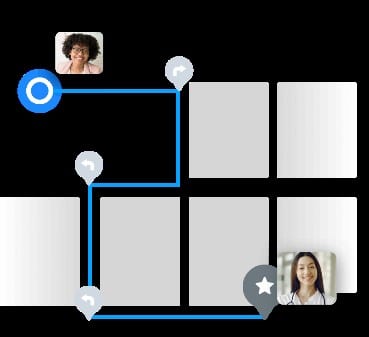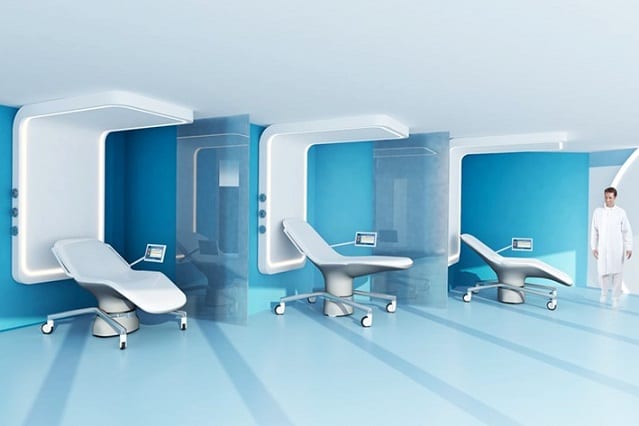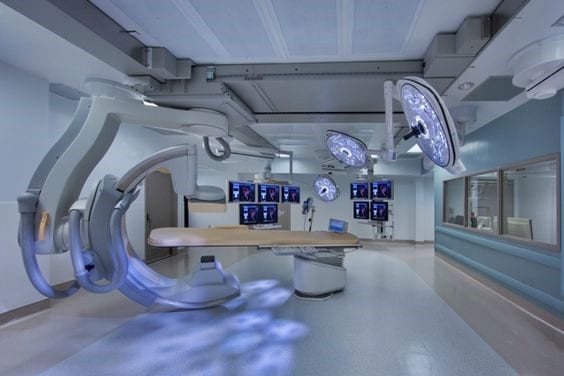Outsource or in-house
Some hospitals have borrowed a people processes place framework, frequently used in the hospitality industry to improve service quality. Some hospitals have outsourced their dining services, maintenance, facilities management, engineering, biomedical equipment management and housekeeping functions to hospitality service providers such as ARAMARK Healthcare and Sodexo, while others have worked with hotel operating companies or hospitality-related firms such as the Ritz-Carton Hotel Company, Four Seasons Hotels and Resorts and the Walt Disney Company for training in-service processes and management. Unfortunately, many ER and hospital administrators continue to offer services that fit an earlier decade and a different target market.
Out-patient and in-hospital facilities
Single patient rooms have been shown to help reduce medical error rates, lessen patient stress and depression, and shorten length of stay while increasing overall satisfaction with the hospital. Newly designed hospitals even offer private single in-room stay-over facilities for family members. Clinicians value patients’ families as important partners in care through social and psychological support which can speed recovery. Family members may even monitor the patient when the nursing staff cannot be present. Some hospitals have begun to offer the comfort of luxury suites to compete for customers who are willing to pay additional out-of-pocket costs that are typically not covered by insurance.
Priorities
Luxurious public spaces may be attractive; however, health facility planners should accept the reality that patients typically do not experience the hospital lobby for an extended period, so substantial investment in lobbies have limited viability. In addition, the design and use of resources for expansive lobby spaces to justify additional construction and operating expenses is unnecessary.
Signage and way-finding

Hotels are usually designed to facilitate direction finding through signage and landmarks. However, hospitals may have expanded in multiple phases on limited land parcels, making them extremely difficult to navigate for patients and families. Hotel style way-finding can save hospitals significant amounts of money. One study (1990), found a savings of approximately $450 per bed when accounting for the hidden costs of hospital staff providing directions when their responsibilities were elsewhere.
Patient room signage is unique to hospitals and difficult for visitors/patients to interpret. Hospitals would be smart to use hotel-style sequential room numbering that is intuitive and familiar. Other options include clocks, and fountains as-way finding devices. Whatever the process, way-finding should be approached as a complete system and sending directions to consumers before the visit, including external building cues, unique building names, maps and signs that are coordinated among the hospital departments and made simple, accurate, intuitive and available in multiple languages. For people with sight and hearing impairment, other technology should be included as part of a complete multi-purpose system.
ER bays and hospital rooms: basics

ER and hospital rooms should include furniture that is comfortable, easily disinfected, and adapted to the needs of the patients as well as the hospital staff. Easily accessible electrical outlets for cell phones, laptops and chargers along with complimentary WIFI are basic necessities. Because of long waits for medical and healthcare personnel, self-service food/beverage outlets and vending machines should be easily accessible, regardless of mobility agility or budget.
HVAC systems that enable patient control of the room temperature should be among the most basic amenities, along with the opportunity to control light and sound. Another basic patient need is the technology to directly reach nurses and doctors. At this moment, in some NY hospitals, there is no system available to contact professional or administrative staff and regardless of need (i.e., pain, access to toilets); patients are left to fend for themselves.
Innovation

Hotels and hospitals share the challenge of designing facilities that are functional, cost-effective and promote the organization’s mission. While the consumer’s selection of hotel facilities maybe discretionary, hospitals need to attract revenue, meet HCAHPS standards and promote positive, patient-centered outcomes is increasingly leading hospitals to consider incorporating hospitality elements in their designs.
It is not easy to introduce hospitality design elements in a complex hospital system as it requires careful planning, systematic thinking and consideration of many factors including the healthcare system, needs of the stakeholders, unique attributes of organizational and/or community cultures, improvement efforts in the planning stages, and financial constraints of the hospital.
Integrating hotel features will require an innovation team composed of interdisciplinary professionals and former patients who are able to recognize the importance of integrating modernization into the organization’s strategic facility plan and getting a buy-in from stakeholders.
Benefits
Benefits of integrating hotel amenities into a hospital environment can create a healing environment and promote patient satisfaction with the potential to increase the financial bottom-line for the institutions. Patients are likely to pay more for improved/enhanced services and leave their medical experience more satisfied resulting in generating positive word of mouth feedback and a higher rate of return, should the patient require future medical services.
© Dr. Elinor Garely. This copyright article, including photos, may not be reproduced without written permission from the author.
Why do eTurboNews journalists need your support?
Powerful corporations, organizations and governments control so much information that reaches the public- including in our travel and tourism industry.
eTurboNews is trying to avoid the trap that befalls much of the U.S. and international media. As a global news organization, we fight to keep our independence when reporting relevant news. Research and fairness in journalism also cost money!
YOU are our inspiration. You could help a little more to keep us going and click here: A free luxury cruise, a first-class airline ticket, or a stay in a 5-star resort could be YOUR reward.





















